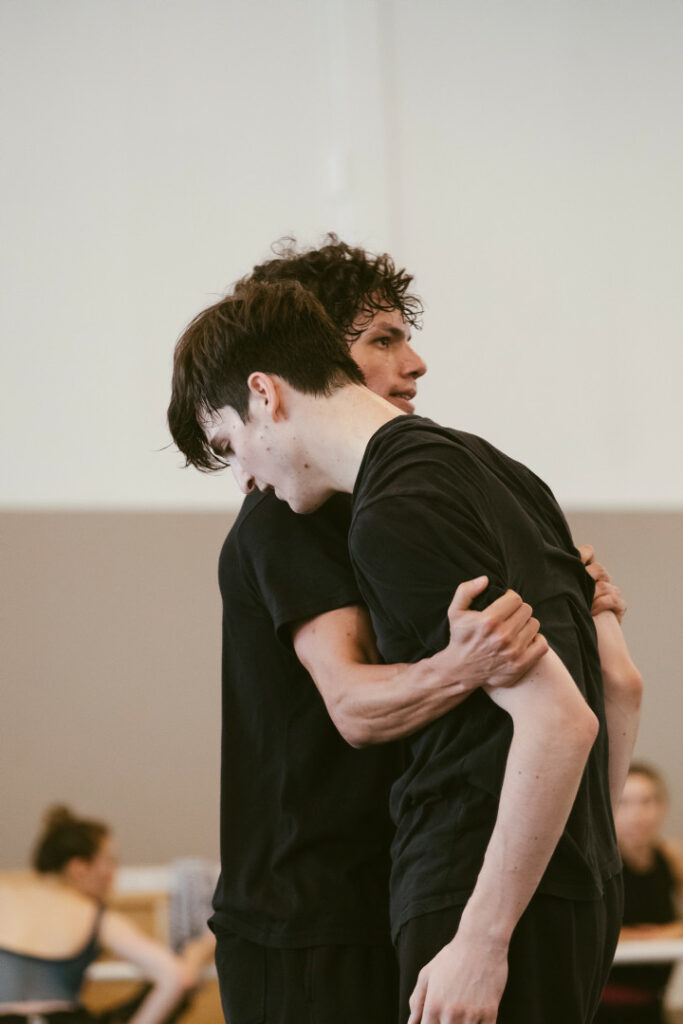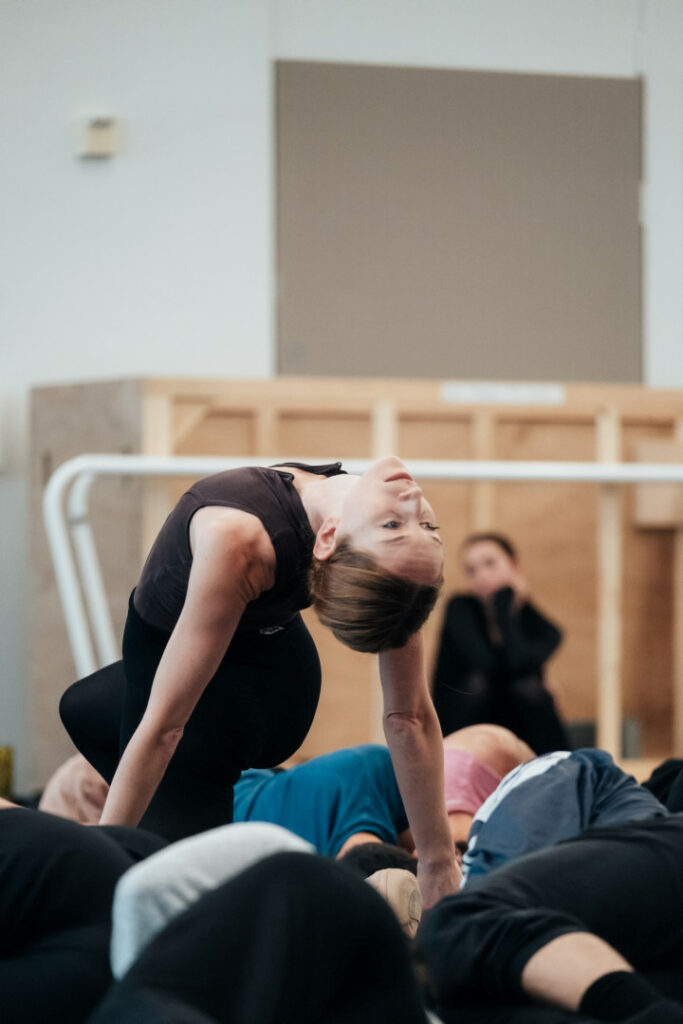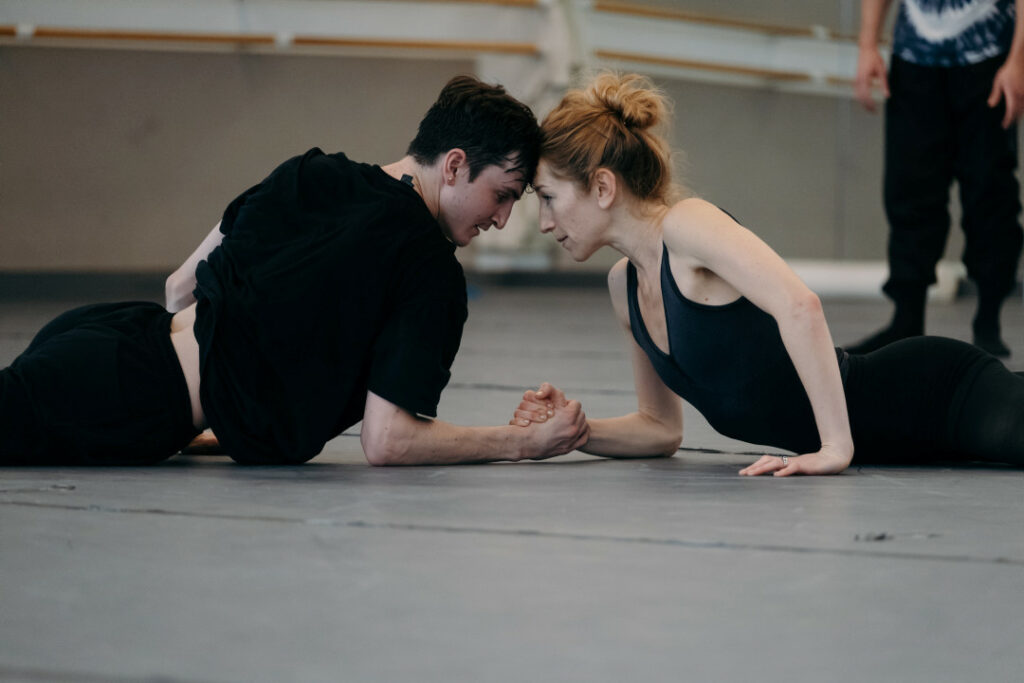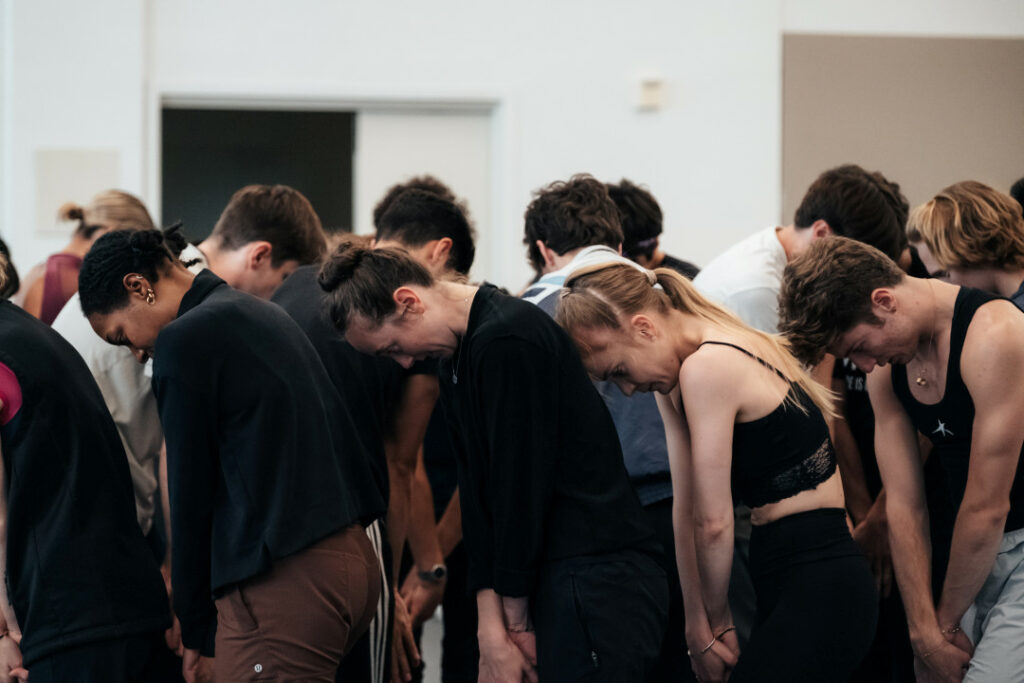Who’s Who: Mere Mortals
Meet the Key Players Who Will Emerge
In the ancient Greek poem of Theogeny, Pandora is the first mortal woman created by the gods. She’s given a jar as a gift from Zeus and an explicit warning not to open it under any circumstances. When curiosity gets the better of her, she opens the jar, releasing all the evils and miseries into the world. Only hope remains trapped inside.
“The idea of inevitable change was interesting to us in the adaptation of this myth. Pandora’s curiosity is in all of us, and the human brain’s desire to go further and make progress is something we cannot take back or erase. We invented the internet and AI, it’s something we cannot remove from our reality. So, the questions around it, the moral questions around it, are very relevant.” – Carmen Kovacs, Dramaturg
Characters won’t be introduced onstage in a formal or traditional way. These are the key players that will emerge from the larger group of dancers:
- HOPE
Hope is the first character that we meet, one that Barton and Kovacs sketched out to be ever-present onstage as a metaphor—a constant grounding presence from the start of the ballet. Described here by Kovacs, “Hope is a floating particle that will forever surround us, like curiosity... an enormously powerful force that dies last, or not at all.” Audiences will notice that the character of Hope is not part of the ensemble; they are the only dancer who remains on the outside of the group. Choreographically speaking, “Hope is like a peaceful tornado, a force of nature that can’t go away.” This is a gender-expansive role where the character of Hope will be portrayed by both male and female dancers.
Isaac Hernández and Parker Garrison rehearsing Aszure Barton and Sam Shepherd's Mere Mortals // © San Francisco Ballet, photo by Lindsey Rallo - PROMETHEUS
Prometheus is the second character we meet. He is a cunning character who, in our telling of the story, is part of the gods but is also a rebel who thrives in chaos. He steals the fire from the gods and brings it to the humans because he is bored and looking to play. The fire represents progress, enlightenment, power, and destruction all at once. Kovacs notes, “Instead of representing Zeus as a separate character onstage, we melted a touch of Zeus into Prometheus. Onstage he emerges as a leading figure, often pulling the strings, quite literally, for the group as a whole.”
Jennifer Stahl rehearsing Aszure Barton and Sam Shepherd's Mere Mortals // © San Francisco Ballet, photo by Lindsey Rallo - PANDORA
Pandora is a new human species with advanced skills that embody progress and learning. She is more knowledgeable than the gods, though it’s not immediately clear exactly what this knowledge is. Kovacs notes that in the myth, Pandora doesn’t have a voice – “We don’t know what she’s thinking or feeling, what her intentions are, or what her truth is. So, we took the opportunity to give her a voice with a kind of monologue where she introduces herself choreographically, and she shows that she has a totally different skill set from the group of dancers.”In this introduction, the beginning of her ‘coming to life,’ there is a sense of not yet knowing herself, and she experiences a wide range of physical, sensory, and mental consciousnesses with wonderment. She is learning to feel complex emotions, although fear is not part of her program. Viewers can watch for how Pandora’s movement differs from that of the group, and how she presents the choreography in an earthy and grounded quality.Together with Epimetheus, Pandora opens the jar. “It is their combined limitless and fearless curiosity that opens the door to inevitable change – and as soon as the others realize what’s possible, they want to be part of that, too.” Similar to the character of Hope, Barton has cast both male and female dancers in the role of Pandora.
Jennifer Stahl and Parker Garrison rehearsing Aszure Barton and Sam Shepherd's Mere Mortals // © San Francisco Ballet, photo by Lindsey Rallo - EPIMETHEUS
We meet Epimetheus throughout the ballet. He is Prometheus’ brother, so viewers can look at how the choreography showcases their brotherly relationship while also hinting at potential familial conflict. In contrast to the original narrative, Epimetheus is not a simple or naive character, Kovacs notes; instead, he is “one of the few fearless beings who follows his curiosities and welcomes new ideas and inventions.” He is a divine being with intuition, passion, and unstoppable drive, willing to take risks and follow the people and ideas that excite and delight him.
San Francisco Ballet rehearsing Aszure Barton and Sam Shepherd's Mere Mortals // © San Francisco Ballet, photo by Lindsey Rallo
When watching Mere Mortals, the audience can look for how Barton has worked with different movement qualities and forms in order to illustrate each character's unique view of the world, exploring their posturing, personalities, strengths, and weaknesses. Barton is very clear though that there is no wrong way to interpret her dances – “Yes, the myth that is Pandora and her jar lives at the seed of inspiration for this work (its progression, its characters, etc.), but this certainly does not have to limit one’s interpretations of Mere Mortals,” Barton says. “Choreographically speaking, the conceptual framework serves as a helpful tool because it offers us a great deal of freedom for imagination. That said, I’m not interested in pushing my own personal views on anybody. What I love most about the collaborative process is how mysterious it remains; moving between logic and spiritual fantasy is simultaneously exciting and daunting. Dance ignites the imagination, that is its power! It’s important to me that the individuals in our audience trust their own imaginations and emotions versus trying to see what we want them to. There is so much to discover in Mere Mortals and I do hope the people who come to experience our work are open to being moved by the beauty and incredible generosity of the artists on stage, they are heroic.”








